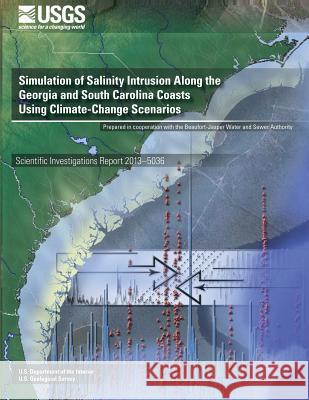Simulation of Salinity Intrusion Along the Georgia and South Carolina Coasts Using Climate-Change Scenarios » książka
Simulation of Salinity Intrusion Along the Georgia and South Carolina Coasts Using Climate-Change Scenarios
ISBN-13: 9781500266769 / Angielski / Miękka / 2014 / 108 str.
Simulation of Salinity Intrusion Along the Georgia and South Carolina Coasts Using Climate-Change Scenarios
ISBN-13: 9781500266769 / Angielski / Miękka / 2014 / 108 str.
(netto: 75,77 VAT: 5%)
Najniższa cena z 30 dni: 80,00
ok. 16-18 dni roboczych
Bez gwarancji dostawy przed świętami
Darmowa dostawa!
Potential changes in climate could alter interactions between environmental and societal systems and adversely affect the availability of water resources in many coastal communities. Changes in streamflow patterns in conjunction with sea-level rise may change the salinity-intrusion dynamics of coastal rivers. Several municipal water-supply intakes are located along the Georgia and South Carolina coast that are proximal to the present day saltwater-freshwater interface of tidal rivers. Increases in the extent of salinity intrusion resulting from climate change could threaten the availability of freshwater supplies in the vicinity of these intakes. To effectively manage these supplies, water-resource managers need estimates of potential changes in the frequency, duration, and magnitude of salinity intrusion near their water-supply intakes that may occur as a result of climate change. This study examines potential effects of climate change, including altered streamflow and sea-level rise, on the dynamics of saltwater intrusion near municipal water-supply intakes in two coastal areas. One area consists of the Atlantic Intracoastal Waterway (AIW) and the Waccamaw River near Myrtle Beach along the Grand Strand of the South Carolina Coast, and the second area is on or near the lower Savannah River near Savannah, Georgia. The study evaluated how future sea-level rise and a reduction in streamflows can potentially affect salinity intrusion and threaten municipal water supplies and the biodiversity of freshwater tidal marshes in these two areas. Salinity intrusion occurs as a result of the interaction between three principal forces-streamflow, mean coastal water levels, and tidal range. To analyze and simulate salinity dynamics at critical coastal gaging stations near four municipal water-supply intakes, various data-mining techniques, including artificial neural network (ANN) models, were used to evaluate hourly streamflow, salinity, and coastal water-level data collected over a period exceeding 10 years. The ANN models were trained (calibrated) to learn the specific interactions that cause salinity intrusions, and resulting models were able to accurately simulate historical salinity dynamics in both study areas.
Zawartość książki może nie spełniać oczekiwań – reklamacje nie obejmują treści, która mogła nie być redakcyjnie ani merytorycznie opracowana.











